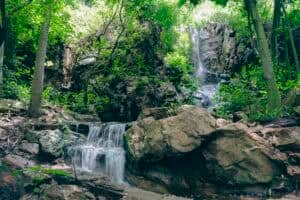The black rhino and conservation efforts have proved to be resilient, with their numbers more than doubling in 2020.

The smaller yet fierce black rhino, a species that has been critically endangered for the better part of the 21st century, has finally received some good news.
Almost 20 years of persistent hard work from WWF’s Black Rhino Range Expansion Project (BRREP) has resulted in positive population growth for the species.
This was confirmed by the International Union for Conservation of Nature (IUCN)’s announcement that black rhino numbers have increased from roughly 2,500 in the 1990s to 5,600 at present.
The black rhino population came dangerously close to being wiped out during the 20th century, thanks to the over-zealous poaching of European settlers and hunters.
Between 1960 and 1995, WWF reported a 98% drop in black rhino populations.
But the black rhino, and conservation efforts, have proved to be resilient, with their numbers more than doubling in 2020.

A camera trap image of a black rhino mother and her calf. Image: Supplied
BRREP, run in partnership with Ezemvelo KwaZulu-Natal Wildlife, the Eastern Cape Parks and Tourism Agency and various other private and community landowners, has created 13 black rhino populations to date, on more than 300,000 hectares of land.
New populations are created by moving up to 25 black rhinos at a time onto large properties.
BRREP head Dr Jacques Flamand said that seven calves have been born on four different sites over the Christmas period alone. This and a year of good rain in most reserves have positively contributed to black rhino populations thriving.
“It’s great to see nearly two decades of hard work on behalf of black rhino paying off. Our sites now have 256 black rhino on them,” Dr Flamand enthused.
In 2019, half of BRREP’s sites reached their annual growth target of 5%, set by provincial conservation bodies.
In addition, black rhino numbers in game reserves from which they were removed to create new populations are also consistently increasing.
The art of ecological management means being able to achieve a fine balance, explained project coordinator Ursina Rusch, who compiles data on different populations.
“You have to remove not too many and not too few to get it right.”
And so far, they have, thanks to a tremendous team effort, said Dr Flamand.
This includes partnerships between landowners and conservation bodies.
“We rely very much on passionate people who have the resources to invest in protecting rhinos. Otherwise, no one would keep them.”
But despite BRREP’s successes, black rhino populations are still in danger of slipping into a negative growth rate.
The project needs much more land if the current numbers are to be maintained.
“A successful increase in black rhino numbers means that there are more calves produced and those need places to be put into as they grow up,” Dr Flamand explained.
Despite the white rhino bearing the brunt of most poaching crimes, black rhino numbers, although increasing, are doing so at a slow growth rate.
“There is still much to do,” Dr Flamand said, “and much of it involves BRREP finding suitable large blocks of land for black rhino, and owners of that land prepared to devote it to black rhino conservation – a risky and costly endeavour.”
Another challenge currently being experienced is the global coronavirus pandemic, which has severely affected wildlife tourism.
But, as concerted conservation efforts continue to persevere, it’s safe to say that black rhino populations are on the slow road to recovery.
(Compiled by Nica Richards)
For more news your way, download The Citizen’s app for iOS and Android.






